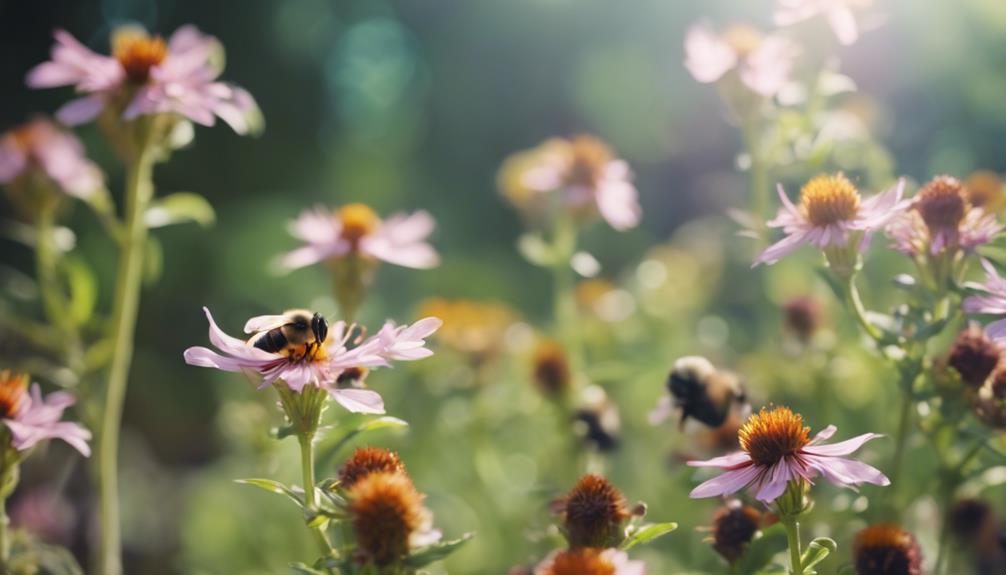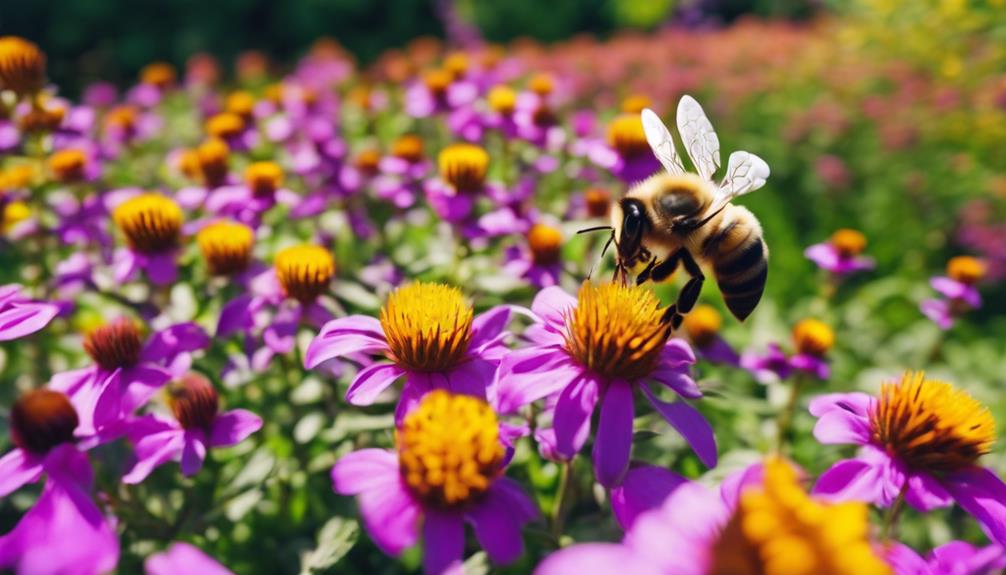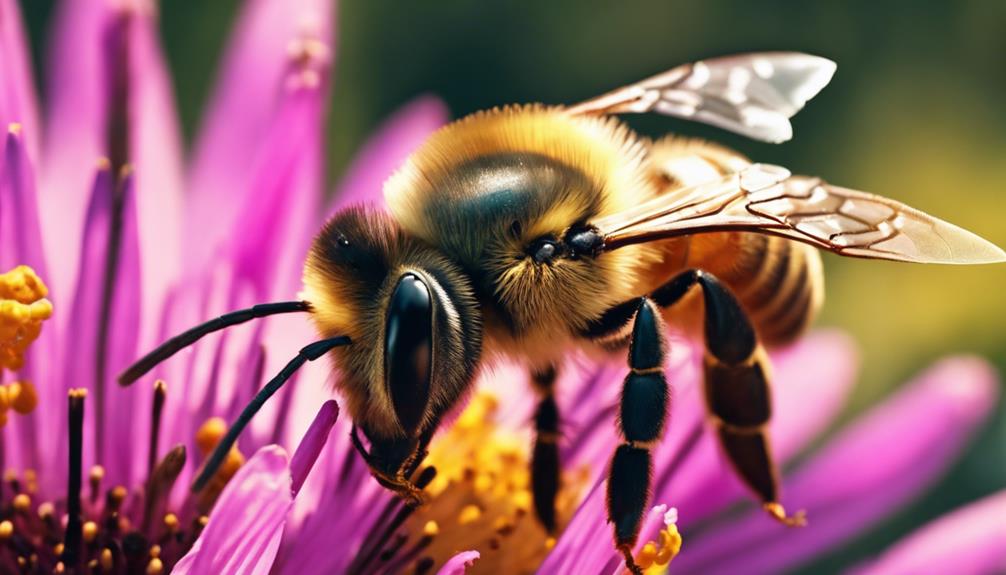In regard to Flow Hives, Italian bees and Carniolan bees are top picks for their friendly nature, abundant honey production, and ability to thrive in various climates while warding off Varroa mites. Italian bees are favored for their docile behavior and impressive honey-making skills, making them a popular choice among novice beekeepers. On the other hand, Carniolan bees are known for their calm demeanor and strong resistance to pests like Varroa mites, making them a reliable option for low-maintenance hives. Choosing the right bees is key to a successful hive setup, ensuring a harmonious coexistence and bountiful honey harvest.
Main Points
- Italian and Carniolan bees are ideal for Flow Hives.
- Italian bees known for gentle temperament and high honey production.
- Carniolan bees exhibit calm behavior and resistance to pests.
- Consider local environment and beekeeper goals for best bee selection.
- Choose bees with adaptability, productivity, and disease resistance.
Characteristics of Italian Bees
Italian bees, renowned for their gentle temperament, are highly favored among novice beekeepers for their ease of handling. These bees not only exhibit a calm demeanor but also are prolific honey producers, ensuring a bountiful harvest for beekeepers.
Their ability to adapt to various climates makes them a versatile choice, thriving in different environmental conditions. Italian bees maintain strong colonies with impressive brood patterns, showcasing their efficiency in hive management. Their hygienic behaviors contribute to disease resistance within the hive, promoting a healthy environment for the entire colony.
Moreover, their inclination to build comb quickly aids in honey production, making them a practical and productive choice for beekeepers seeking both ease of management and high honey yields.
Advantages of Carniolan Bees
Boasting a gentle demeanor and robust disease management skills, Carniolan bees present numerous advantages for beekeepers seeking a reliable and productive colony. Here are some key benefits of choosing Carniolan bees:
- Gentleness: Carniolan bees are known for their calm temperament, making them a joy to work with for beekeepers of all experience levels.
- Hygienic Behavior: Their strong hygienic behavior helps in keeping the hive clean and disease-free, reducing the need for human intervention.
- Resistance to Pests: Carniolan bees exhibit resistance to pests like Varroa mites, ensuring the health and longevity of the colony without the need for excessive chemical treatments.
These qualities make Carniolan bees a popular choice for beekeepers looking for a low-maintenance and thriving hive.
Local Environment Considerations

When contemplating the best bees for your Flow Hive, it’s vital to consider the specific climate and environmental conditions of your local area. Local environment considerations play a pivotal role in determining which bee species will thrive in your region.
Factors such as temperature fluctuations, humidity levels, and seasonal changes can impact the success of your hive. It’s important to research and select bee strains that are well-adapted to your area’s flora and weather patterns.
Consulting with local beekeeping communities or associations can provide valuable insights into which bee species or subspecies are most suitable for your location. By choosing bees that are suited to your environmental conditions, you increase the chances of a successful and productive Flow Hive setup.
Beekeepers Preferences and Goals
We beekeepers have different preferences regarding selecting the perfect bees for our Flow Hives. Our goals often revolve around maximizing hive productivity and honey yield.
Understanding bee breed selection and aligning it with our hive productivity goals can lead to successful beekeeping ventures.
Bee Breed Selection
Considering beekeepers’ preferences and goals, selecting the right bee breed plays an essential role in the success of managing a Flow Hive. When choosing the bee breed for your hive, it’s crucial to align the characteristics of the bees with your beekeeping objectives. Here are some popular bee breeds among beekeepers looking to maximize their Flow Hive experience:
- Italian honey bees: Known for their ease of management and high productivity.
- Buckfast bees: Favored for their calm nature, minimal swarming, and abundant honey production.
- Hygienic Italian bees: Recognized for their hard work ethic, heat tolerance, and good honey yields.
Each bee breed brings its unique advantages to the hive, so consider your priorities when making your selection.
Hive Productivity Goals
To maximize hive productivity in Flow Hives, we prioritize bee species that excel in high honey production, gentle behavior, low swarming tendencies, and disease resistance. Italian bees, Carniolan bees, and Buckfast bees are popular choices due to their productivity and calm demeanor, aligning well with the goals of beekeepers.
Italian bees, known for their hard work and adaptability to various climates, are particularly favored for their excellent honey yields in Flow Hives. Through breeding programs, beekeepers aim to improve desirable traits like gentleness and reduced swarming tendencies, ultimately boosting productivity and ease of hive management.
Selecting the right bee species is essential for achieving successful beekeeping in Flow Hives, ensuring a harmonious balance between productivity goals and effective hive management.
Adaptability to Various Climates

Italian honey bees demonstrate remarkable adaptability to various climates, particularly excelling in hot regions with mild winters. When contemplating which bees are best for flow hives, it’s crucial to take into account their ability to thrive in different environmental conditions.
Here are some key points to ponder:
- Breeding Programs: Ongoing breeding initiatives aim to cultivate bee strains that can adjust to a wide range of climates, ensuring the bees can thrive and remain productive in various environments.
- Climate Influence: Climate plays a significant role in bee behavior and productivity. Italian honey bees’ adaptability makes them a favorable choice for beekeepers in regions with hot climates and mild winters.
- Consideration of Apis cerana: While Italian honey bees are versatile, other bee species like Apis cerana may face challenges in certain regions due to bans or outbreaks, underscoring the importance of selecting the right bees for specific climates.
Productivity in Honey Production
Adapting to various climates, bee productivity in honey production becomes a key consideration for selecting the most suitable bees for Flow Hives.
Italian honey bees are like the diligent workaholics of the bee world, known for their high honey output that keeps beekeepers smiling.
Carniolan honey bees are the consistent performers, always delivering honey efficiently, making them a reliable choice for your sweet harvest.
If you’re looking for bees that can handle different environments like pros, Caucasian honey bees are your go-to pals for maintaining good honey levels in your Flow Hive.
And let’s not forget about the Buckfast bees – calm, cool, and excellent at honey production, they bring both peace and sweetness to your apiary.
Resistance to Diseases

When considering bee selection for Flow Hives, resistance to diseases is an essential factor to prioritize. Here are some key points to keep in mind:
- Some bee subspecies, like the Buckfast bees, are intentionally bred for their robust resistance to diseases and pests.
- Breeding programs actively work on developing bee strains with heightened disease resistance, focusing on combating common bee illnesses.
- Italian bees, particularly the hygienic ones, possess a unique ability to identify and eliminate diseased brood, significantly contributing to overall disease resistance in colonies.
Selecting bees with natural resistance to Varroa mites and other prevalent bee diseases is crucial. Remember, ongoing monitoring and effective management strategies play a vital role in sustaining the health and disease resilience of your honey bee colonies.
Population Build-up in Spring
In spring, our bees focus on rapidly increasing their population to bolster resources and expand the colony. This period is vital for bees as they ramp up brood production, ensuring a strong workforce of worker bees.
The buzz of activity intensifies as bees diligently collect pollen and forage for nectar to sustain the growing population. Queen bees play a pivotal role by laying more eggs to meet the high demand for new worker bees during this time.
To support this population growth, having ample food reserves and favorable weather conditions is essential. Witnessing the colony thrive and flourish in spring is truly a proof of the hard work and dedication of our buzzing friends.
Traits for Honey Production

When considering bee species for your flow hive, traits for honey production are key. Productive honeybees like Italian, Buckfast, and Carniolan bees are top choices due to their high honey yields and favorable characteristics.
Selecting bees with gentleness, productivity, and low swarming tendencies maximizes honey production, ensuring a sweet and successful harvest.
Bee Species Selection
For successful honey production in Flow Hives, selecting bee subspecies with specific desirable traits such as gentleness and low swarm tendency is essential.
When considering the best bees for your hive, here are some top choices based on their honey-making prowess:
- Italian honey bees: These bees are favored for their ease of management and strong honey production, making them a reliable option for Flow Hives.
- Carniolan bees: Known for their calm demeanor and adaptability to different climates, Carniolan bees are a great choice for beekeepers looking for a versatile and easy-to-handle species.
- Buckfast bees: With their gentle nature, low swarm tendency, and high productivity in honey yields, Buckfast bees are popular among bee enthusiasts seeking a harmonious beekeeping experience.
Productive Honeybees
Among the various honeybee subspecies, those with traits conducive to high honey production are highly sought after by beekeepers. Italian honey bees are excellent for beginners, known for their productivity and ease of management.
Carniolan honey bees stand out for their rapid spring buildup and gentle nature, making them a top choice. Caucasian honey bees, with their good honey production and adaptability to cold climates, offer versatility for flow hives.
Buckfast bees are prized for their calm demeanor, low swarm tendency, and exceptional honey yields. Hygienic Italian bees are also hardworking, resilient in hot summers, and produce abundant honey, making them a valuable addition to any apiary.
Each subspecies brings unique strengths to the table, catering to different preferences and environments in the pursuit of honey production.

Roger Thomas is a seasoned beekeeper and hive architect with a deep-seated passion for sustainable living. His fascination with bees has shaped his professional career, giving him practical and theoretical expertise in bee behavior, colony health, and optimal hive conditions. Roger’s technical skills shine in his bespoke hive creations that cater to the specific needs of diverse bee species, while his sustainable practices promote environmental balance and the wellbeing of the bee population.
As he continues his journey in beekeeping, Roger has become a dedicated advocate for responsible practices and an insightful educator in his field. His posts aim to inspire new beekeepers, underline the importance of sustainability, and showcase the remarkable contribution bees make to our ecosystem. Roger invites you to join him as he delves into the world of bees and the rewarding, honey-sweet art of beekeeping.


